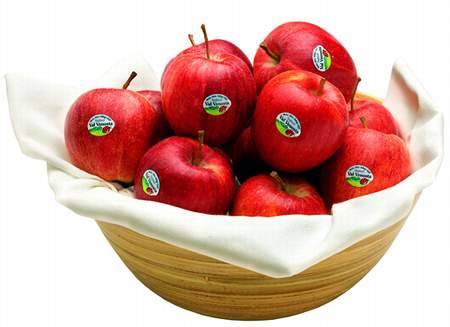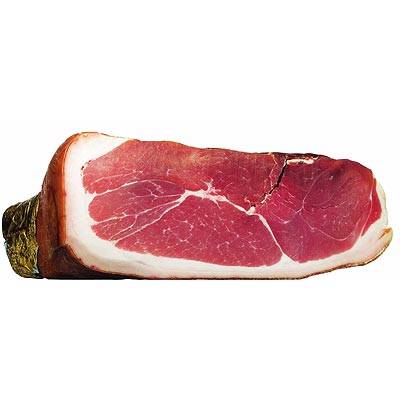Made in Italy: How to Protect Authenticity. Interview with Donatella Iaricci, Head of the Intellectual Property Rights Desk
1. What made the Government decide to use the PDO and PGI seals and why they were important to Italian products?
To answer to the first part of your question the Italian legislation on PDO&PGI products and logos complies with the European Union law on PDO&PGI designation. Within the European Union there are specific European Community (EC) Regulations that provide protection for geographical indications, which shall be binding in their entirety and directly applicable in all Member States.
The seals are important to Italian product because labeling an Italian product as PDO (Protected Designation of Origin) and PGI (Protected Geographical Indication), through the corresponding symbols, meets two European requirements: first, it helps to enhance the value of the product' intrinsic properties, considered unrepeatable and inimitable; second, it offers a certification of authenticity of Italian products helping consumers to better distinguish them from any imitation.
PDO and PGI designations refer to products of excellence that express a close tie to the territory of origin. Indeed, the products are manufactured according to rigorous workmanship criteria to guarantee product's quality consumer' safety and respect for the environment. They are named after the geographical places of origin of the products themselves. These products can not be imitated elsewhere and only the owners can use these designations.
2. What year did the quality Seal (PGI and PDO) first appear on Italian products?
The seal for PDO and PGl products were introduced in 2006 but the symbols were identical in terms of shape, color and design for the two protected categories. In order to enable consumers to distinguish between them, the EC Regulation No. 628/2008 introduced two different colors for the Community symbols to apply on the label or packaging of products whose names are registered either as a DOP or a PGI. The new color requirement: golden-red for DOP and golden-blue for PGI, is enforceable since May 1, 2010. The regulation is directly applicable in all Member State and the seals are compulsory for all the producers.
3. Should consumers assume that products with the seal are of a better quality than those without?
There are many Italian products whose quality is excellent even if they are not recognized as PDO and PGI. However, the Geographical Indications System offers a guarantee of the product quality, providing consumers with a consistent and credible form of purchasing information about the product's authenticity.
4. How long is the process from inspection to codification generally speaking?
The application for registration follows two procedures, enforced at regional, national and European level: it takes more than one year.
Only a "group" shall be entitled to apply for registration, whereas a "group" means any association of producers or processors working with the same agricultural product or foodstuff, including other interested parties.
In Italy, any application for registration and related shall be addressed contextually to the Ministry for Agriculture Politics (Ministero delle Politiche Agricole) and to the concerned Regions, in order to verify compliance with the provisions of PDO and PGI product specification.
The Ministry shall scrutinize by appropriate means the application received to check its admissibility, if it is justified and meets the conditions laid down in the EC Regulation. The Ministry scrutiny, after receiving the Region’s favorable decision, should not exceed a period of 240 days to certify:
the legitimacy of the applicant group;
the completeness of documents presented, to set out the required specifications, which are: the name, a description of the product, a description of the link between the specific quality, the reputation or other characteristics of the agricultural product or foodstuff and the geographical territory, including the specific elements of the 25years-old production method;
the adequacy to the provisions of the product specification;
that the product doesn’t exist in a geographical area or a in a proximity geographical area where another product, renown for the same characteristics, is produced.
After technical verifications and if the competent authority considers that the requirements to obtain the registration are met, it takes a favorable decision and publish the application on the Official Journal of Italy, ensuring 30 days within which any natural or legal person having a legitimate interest may lodge objection to the application.
If Italy takes a favorable decision, it submits it to the European Commission for a final decision.
This scrutiny should not exceed a period of 12 months. Where, the Commission considers that the conditions laid down in this Regulation are met, it shall publish in the Official Journal of the European Union
Once registered, the juridical effects of the designations enter into force: only the producers from the geographical area, complying with the EU standards, have the exclusive right to use the appropriate Community symbols or indications on the packaging barring any other third party from inappropriate use, imitation, usurpation and/or misleading allusion to the protected Italian products.
5. Beside looking for these seals, what other advice can you offer to consumers looking for authentic Made in Italy products?
One of the advices is to consumers: pay attention at labels on the products, since they should state "Product of Italy" instead of "Italian style", or other expressions that recall the 'Italianity". It's important if the label and the packaging display the symbol, which are red for PDO and blue for PGI products.
On the institutional side, it’s important to foster the protection of Italian Geographical Indications among American consumers throughout educational campaigns. In this regard, the Ministry of Economic Development has created a network of Desks, predominantly located at the Italian Trade Commission and/or Embassies offices, in countries where a stronger protection of Made in Italy goods in necessary. The New York IPR Desk produces legal analysis on the “Italian Sounding” Phenomenon in vogue in the United States, and promoted activities aimed at informing American consumers about it.
6. When will organic products receive a unified code or seal?
Organic products have been recently regulated by EU Commission via Commission Regulation (EU) n. 271/2010 of 24 March 2010.
The Article 57 of Commission Regulation No. 889/2008 sets up the EU organic logo specifications. The EU organic logo is compulsory since July 1st, 2010.
Two well-known symbols form the basis of the EU Organic Logo: the European flag – official symbol of the European Union since 1986 – and a leaf that is used in a variety of shapes to symbolize nature and sustainability.
7. Authenticity of Italian products has become an important topic of debate. What is the stance of your office concerning products made in America?
There are many food products, made in the USA, that use Italian words or recall name and colors of the Italian PDO and PGI products. This gives birth to the so-called "Italian Sounding" phenomenon, as named by the Italians; what is seen as "unfair competition” for Europe is a legal practice in the United States, which is creating a huge economic damage to Italian companies and consortia conforming to PDO and PGI specifications!
This trend, however, can mislead and confuse American consumers, whereas it should become clear that "Parmesan" is not the Italian "Parmigiano Reggiano".
In this scenario, the IPR Desk role is to assist Italian companies in protecting their trademark as well as monitoring the counterfeiting phenomenon in order to elaborate the best measures to defend Made in Italy products in the United States. It is hoped that there would be a modification of the international legal framework, or the signature of a bilateral agreement between EU and USA, including the extension of the same protection accorded to wines, as under Article 23 of the TRIPs (Trade-Related Aspects of Intellectual Property Rights) Agreement, to food products. In short, this modification to the actual system of the TRIPs would prevent the use of expressions such as "Italian Style, Italian recipe, Italian tradition" that can easily mislead American consumers.
Special thanks to the IPR Desk-New York for their assistance with this interview. For more information please visit the website of the Italian Trade Commission










































i-Italy
Facebook
Google+
This work may not be reproduced, in whole or in part, without prior written permission.
Questo lavoro non può essere riprodotto, in tutto o in parte, senza permesso scritto.